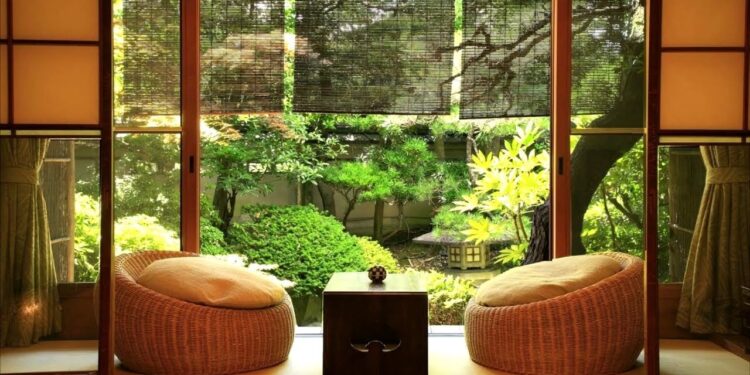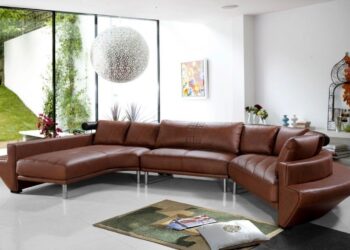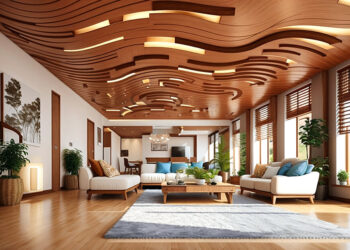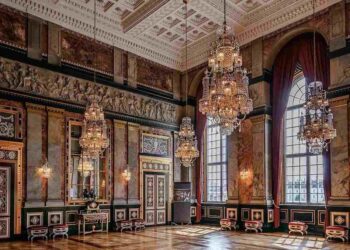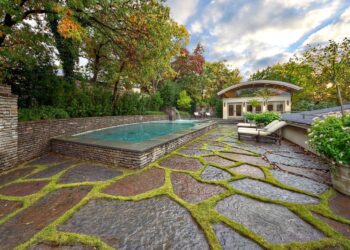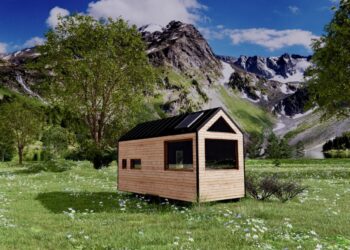The aesthetic philosophy of Zen, a profound tradition rooted in Japanese Buddhism, has transcended its spiritual origins to become a powerful force in modern architecture, interior design, and landscaping. Far from a mere style, Zen design is a holistic practice of creating spaces that embody simplicity, tranquility, and harmony with nature, offering a refuge from the chaos of the modern world. Its core principles, which are as much about a way of life as they are about aesthetics, have been refined over centuries to cultivate a sense of inner peace and mindfulness. Understanding these timeless principles explained is crucial for designers, homeowners, and anyone seeking to infuse their living spaces with a deeper sense of balance, purpose, and serenity.
The Philosophy of Zen Design
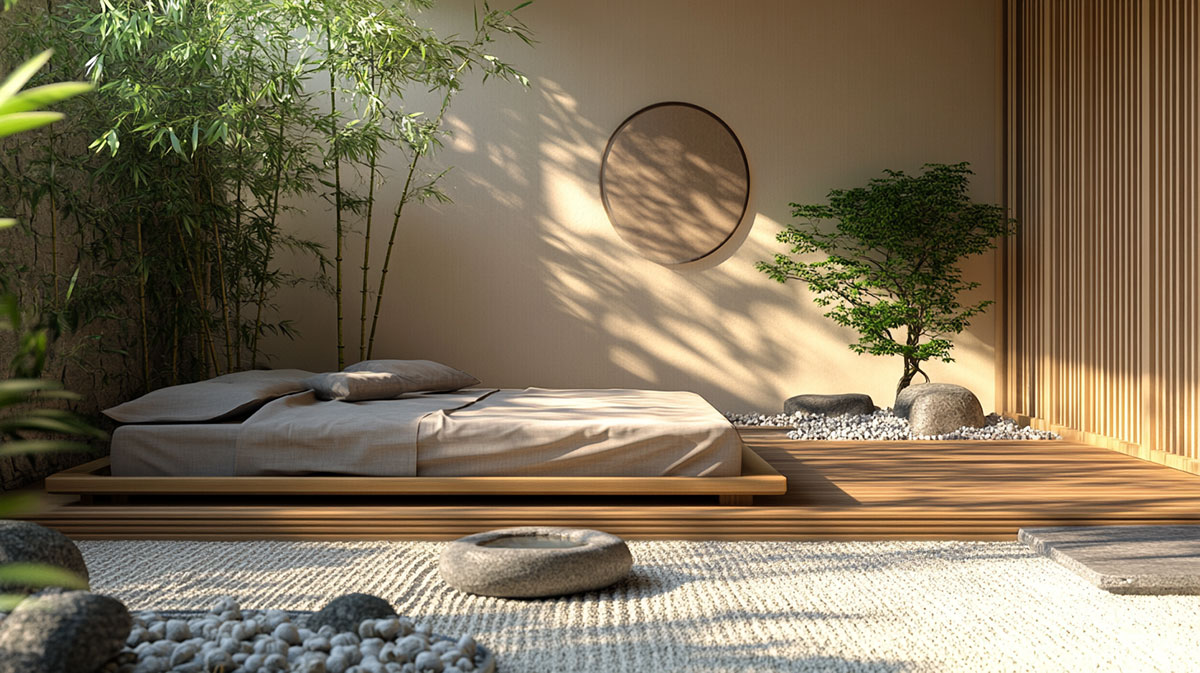
At its heart, Zen design is an expression of a worldview that finds beauty in what is natural, imperfect, and understated. It is a philosophy that seeks to eliminate clutter and excess, not for minimalism’s sake, but to reveal the essential beauty and purpose of a space.
A. The Seven Principles of Zen Aesthetics
Zen design is distilled into a set of core aesthetic principles that guide every aspect of a space’s creation. These are not rigid rules but rather a philosophical framework for design.
- Fukinsei (Asymmetry and Irregularity): Zen design embraces asymmetry and rejects perfect, predictable balance. It finds beauty in irregularity and imbalance, reflecting the natural world, which is inherently asymmetrical. A perfectly symmetrical room can feel static and unnatural, while an asymmetrical composition feels dynamic and alive.
- Kanso (Simplicity and Elimination of Clutter): Kanso is the principle of extreme simplicity, but it’s not just about a lack of objects. It’s about revealing the essential nature of a space by removing all that is non-essential. Every item in a Zen-inspired room has a purpose and is placed with intention, creating a sense of clarity and mental spaciousness. It is a practice of “less is more.”
- Koko (Austerity and Austerity with Purpose): Koko refers to an aesthetic of austerity and spareness, but it’s not about being stark or cold. It’s about a mature and refined aesthetic that avoids ostentation and finds elegance in the simple and unadorned. It is a beauty born of humility and discipline.
- Shizen (Naturalness and Absence of Pretense): This is the principle of naturalness. Zen design uses natural materials in their unadorned state (e.g., unfinished wood, raw stone, natural fibers) and seeks to integrate a space with its natural surroundings. It avoids artificiality and finds beauty in the honest, unforced state of things.
- Yugen (Profound Grace and Suggestive Subtlety): Yugen is a difficult-to-translate concept that refers to a deep, mysterious beauty. It is an aesthetic of subtle suggestion rather than direct declaration. A Zen space might use a single, carefully placed object or a play of light and shadow to evoke a powerful emotion or a sense of mystery, inviting contemplation and imagination.
- Datsuzoku (Freedom from Convention): This principle is about being unconstrained by convention and habit. It encourages creativity and spontaneous expression, allowing a design to feel fresh and unconventional, moving beyond the predictability of the norm.
- Seijaku (Tranquility and Stillness): Seijaku is the ultimate goal. Zen design seeks to create an environment of profound tranquility and stillness, a place where the mind can find peace. This is achieved through a careful balance of all the other principles, from the simplicity of the space to the naturalness of the materials.
B. The Connection to Wabi-Sabi
The principles of Zen design are deeply intertwined with the Japanese aesthetic of Wabi-Sabi. Wabi-Sabi finds beauty in what is imperfect, impermanent, and incomplete. In design, this is reflected in the use of aged materials, weathered textures, and the celebration of the natural cycles of growth and decay. A crack in a ceramic bowl or the patina on an old piece of wood is not a flaw but a mark of beauty, a testament to its history and the passage of time.
The Elements of Zen Design
To create spaces that embody these principles, Zen design relies on a specific set of core elements and a meticulous approach to their arrangement. The master designer understands how to combine these elements to evoke the desired emotion and aesthetic.
A. Color Palette and Light
The color and lighting of a Zen space are intentionally chosen to create a sense of calm and naturalness.
- Neutral and Earthy Tones: The primary color palette is natural, subtle, and neutral. It revolves around earthy tones like whites, creams, beiges, grays, and natural browns. This provides a clean, calming backdrop that doesn’t overstimulate the senses.
- Strategic Pops of Color: While the palette is neutral, subtle pops of color are often introduced through natural elements, such as a single green plant, a vase with a single branch, or a piece of natural wood. The goal is a subtle accent, not a jarring contrast.
- Natural Light: Maximizing natural light is paramount. Large windows, skylights, and a minimalist approach to window treatments are used to flood a space with sunlight, which is a powerful source of life and energy. The quality of natural light is dynamic and ever-changing, a reflection of the passing of time.
- Indirect and Warm Lighting: For artificial light, the focus is on creating a warm, soft, and indirect glow. Recessed lighting, lamps with natural fiber shades, and candles are used to create a serene and intimate atmosphere, avoiding harsh, bright overhead light.
B. Materials and Textures
Zen design celebrates the natural beauty of materials in their rawest, most honest form.
- Natural Materials: The preferred materials are those found in nature:A. Wood: Used for flooring, furniture, and structural elements. Unfinished or lightly finished wood is often preferred to showcase its natural grain and texture.B. Stone: Used for floors, accents, or in gardens. Rough, natural stone adds a sense of permanence and connection to the earth.
C. Bamboo: Used for screens, flooring, and decorative elements. It adds a sense of lightness and natural elegance.
D. Paper (Shoji Screens): Traditional rice paper screens (shoji) are used to partition rooms or cover windows. They diffuse light beautifully, creating a soft, ethereal glow.
E. Natural Fibers: Materials like cotton, linen, and silk are used for bedding, cushions, and curtains. They are soft, breathable, and have a natural, understated beauty.
- Textural Variety: The combination of these materials is a key design element. The contrast between the smooth surface of wood and the rough texture of stone, or the softness of a cotton rug on a concrete floor, adds a sensory richness to the space without clutter.
C. The Importance of Minimalist Furnishings and Simplicity
Zen design requires a deliberate and thoughtful approach to furnishing a space, prioritizing quality over quantity.
- Essential Furniture: The guiding principle is to only include what is essential. A Zen-inspired room will have very few pieces of furniture, and each piece will be chosen for its purpose, quality, and beauty.
- Low-Profile Furniture: Furniture is often low to the ground, such as platform beds, low tables, and floor cushions. This is a subtle reflection of the traditional Japanese practice of sitting and sleeping on the floor, creating a sense of groundedness and connection to the earth.
- Clean Lines: Furniture is characterized by clean, simple lines and a lack of ornamentation. The design is in the form and function of the piece, not in decorative accents.
- Storage and Organization: A key to achieving Kanso is excellent storage. Built-in, concealed storage is used to hide all clutter, ensuring that the visual space remains clean and uncluttered.
- Natural Elements as Decor: Instead of traditional decorations, Zen design uses natural elements as art: a single flowering branch in a simple vase, a small bonsai tree, a single stone on a wooden table.
Applying Zen Principles
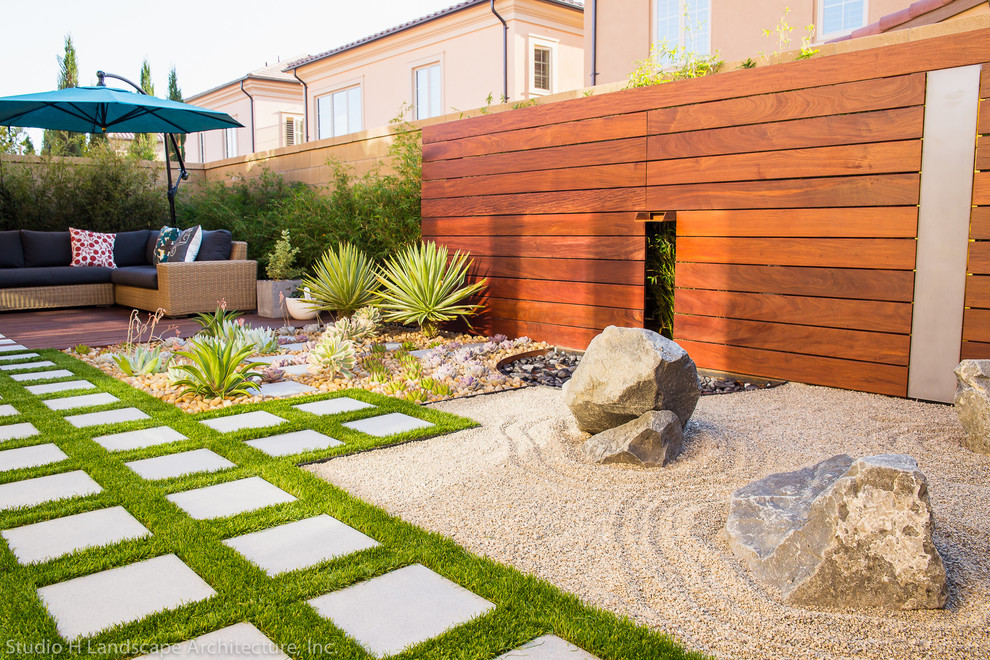
The principles of Zen design are versatile and can be applied to any space, from a single room to an entire garden, to create a sense of harmony and tranquility.
A. The Zen Bedroom
- Purpose: To create a sanctuary for rest and meditation.
- Key Elements: Low-profile platform bed, a neutral color palette, natural wood flooring, soft indirect lighting, and a single piece of art or a plant.
- Design Secrets: Eliminate all electronic clutter. Use concealed storage for clothes and other items. The goal is a space that is profoundly simple and calming.
B. The Zen Bathroom
- Purpose: To create a peaceful, spa-like environment.
- Key Elements: Natural materials like stone and wood, clean lines, minimalist fixtures, a freestanding tub, and a focus on natural light.
- Design Secrets: Use a neutral color palette. Incorporate a small, carefully placed plant or a stone. The goal is a space that feels clean, open, and serene.
C. The Zen Living Room
- Purpose: To create a space for quiet contemplation and conversation.
- Key Elements: Low-profile furniture, a neutral color palette, a large window with a view of nature, and a focus on natural materials.
- Design Secrets: Avoid a television as a focal point. Use a simple, low coffee table and floor cushions. The space is arranged to encourage interaction and quiet reflection.
D. The Zen Garden (Karesansui)
- Purpose: To create a space for meditation and philosophical contemplation.
- Key Elements: Raked white sand or gravel, a few carefully placed rocks, and sometimes moss.
- Design Secrets: The sand represents water, and the rocks represent mountains or islands. The raked patterns symbolize waves or ripples. The design is a miniature, metaphorical landscape that invites the mind to find stillness.
- Philosophy in Action: The act of raking the sand is a form of meditation. The austerity of the space forces the mind to focus on the essential, revealing a profound sense of peace.
The Benefits of Zen Design
Beyond its aesthetic appeal, a Zen-inspired space offers tangible benefits for physical and mental well-being, proving that design can be a powerful tool for a better life.
A. Reduces Stress and Anxiety
- Visual Calm: The minimalist, uncluttered nature of Zen design reduces visual noise and sensory overload, which can be a major source of stress.
- Tranquil Atmosphere: The combination of natural light, earthy tones, and soft textures creates a calming and peaceful atmosphere, which can lower stress levels and reduce anxiety.
- Mindful Living: A Zen space encourages mindfulness. By removing distractions, it forces you to be present in the moment, which is a powerful practice for mental well-being.
B. Enhances Focus and Productivity
- Eliminates Distractions: The absence of clutter and unnecessary objects creates a space that is free of distractions, allowing for greater focus and concentration.
- Clear Mental Space: An uncluttered physical space often leads to a clearer mental space. It allows the mind to rest and be more receptive to creative thought and problem-solving.
- Order and Flow: A well-organized, uncluttered space with a clear flow promotes a sense of order and control, which can enhance productivity.
C. Fosters a Connection to Nature
- Biophilic Design: The use of natural materials and a focus on natural light and views of nature taps into our innate human need to connect with the natural world. This connection has been shown to reduce stress, improve mood, and enhance cognitive function.
- Simplicity of Nature: The design celebrates the simple, unadorned beauty of nature, reminding us to find beauty in the small, everyday details of the world around us.
- Seasonal Awareness: The use of plants and a focus on natural light connects a space to the changing of the seasons, a subtle reminder of the natural rhythms of life.
Conclusion
Zen design is a powerful and timeless philosophy that offers a blueprint for creating spaces of profound tranquility and harmony. By embracing its core principles explained—simplicity, naturalness, asymmetry, and austerity—we can move beyond mere aesthetics to craft living environments that are not just beautiful, but also deeply purposeful and restorative.
The beauty of Zen design is its universality. Whether you are transforming a full-scale home or simply a small corner of a room, you can apply these principles to create a personal sanctuary that reflects your values and supports your well-being. By stripping away the unnecessary and celebrating the essential, you are not just designing a space; you are cultivating a state of mind. The ultimate goal of Zen design is not a perfect room, but a profound sense of inner peace, proving that the most beautiful designs are often the simplest, and that a clutter-free space can be the first step towards a clutter-free mind.

